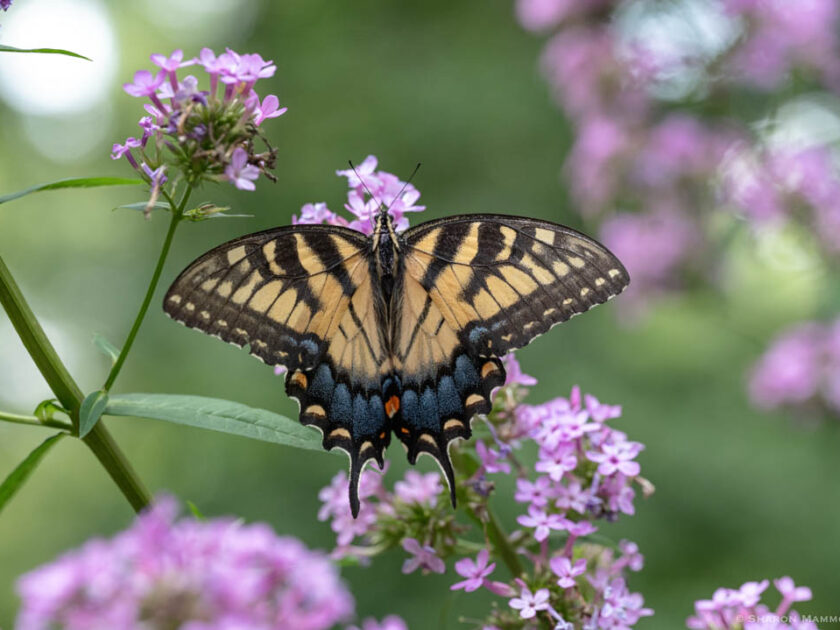On any given day in the summer, if you are outside, you are likely to see eastern tiger swallowtail butterflies ((Papilio glaucus) flitting around. You see them in the garden, in the forest, along the river, crossing the roads. They are the yellow and black butterflies and are very common. Let’s learn a few things about these beautiful butterflies.
As is true with all butterflies and moths, the babies look nothing like the adults. Their caterpillar form is very different than their adult form. As caterpillars they look like bird poop and then eventually molt to look like a mini snake with two false eyes on one end. Tiger swallowtail caterpillars feed on a variety of leaves, including tulip poplar, ash, willow, basswood and sweetbay. Female butterflies lay their tiny green eggs on the leaves of these plants. Eggs will hatch out in 5-10 days and then will spend 3-4 weeks as caterpillars.
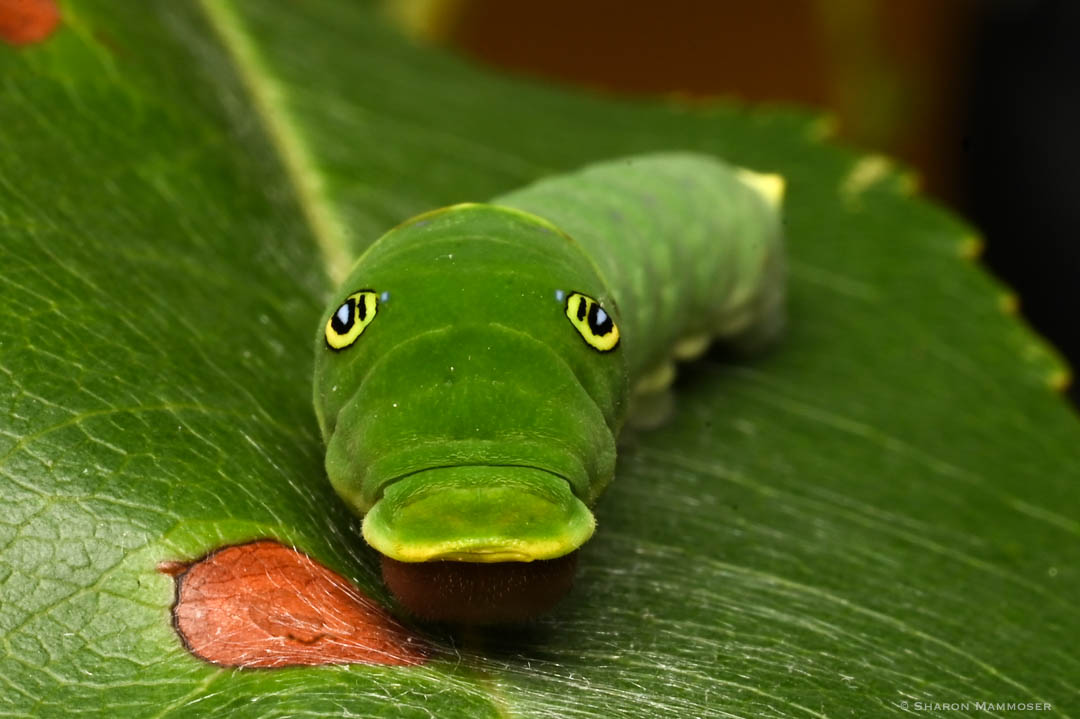
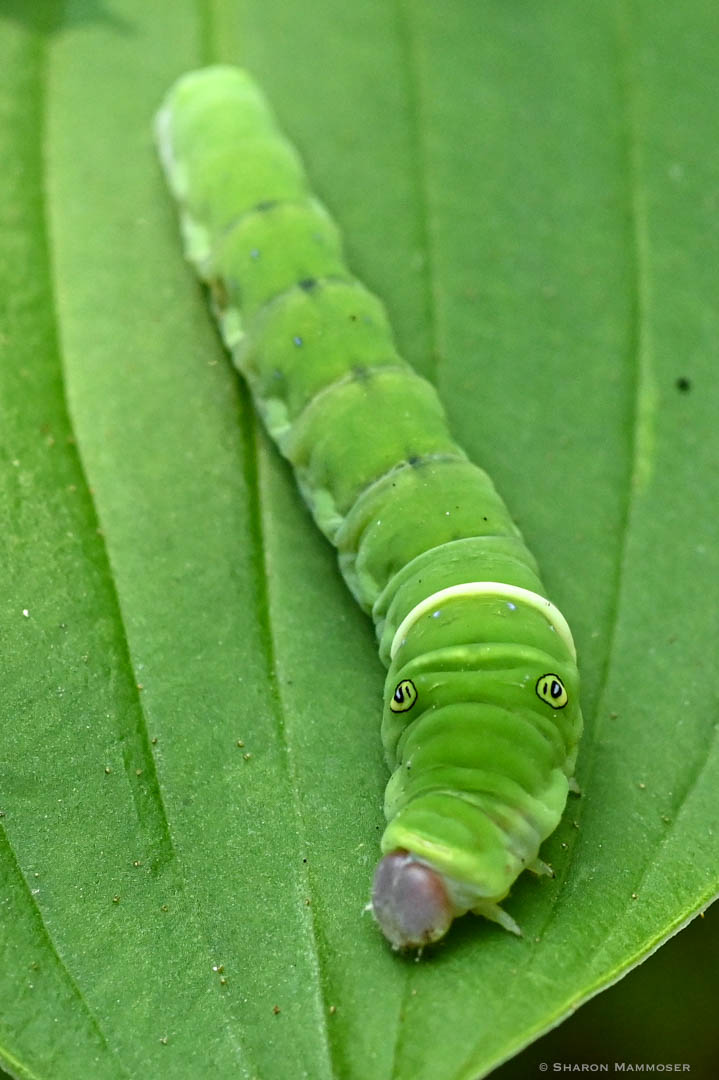
The caterpillars will shed their skin one last time, creating a chrysalis. They will remain in this stage for 10-20 days, or, as in the case of fall chrysalises, overwinter for several months.
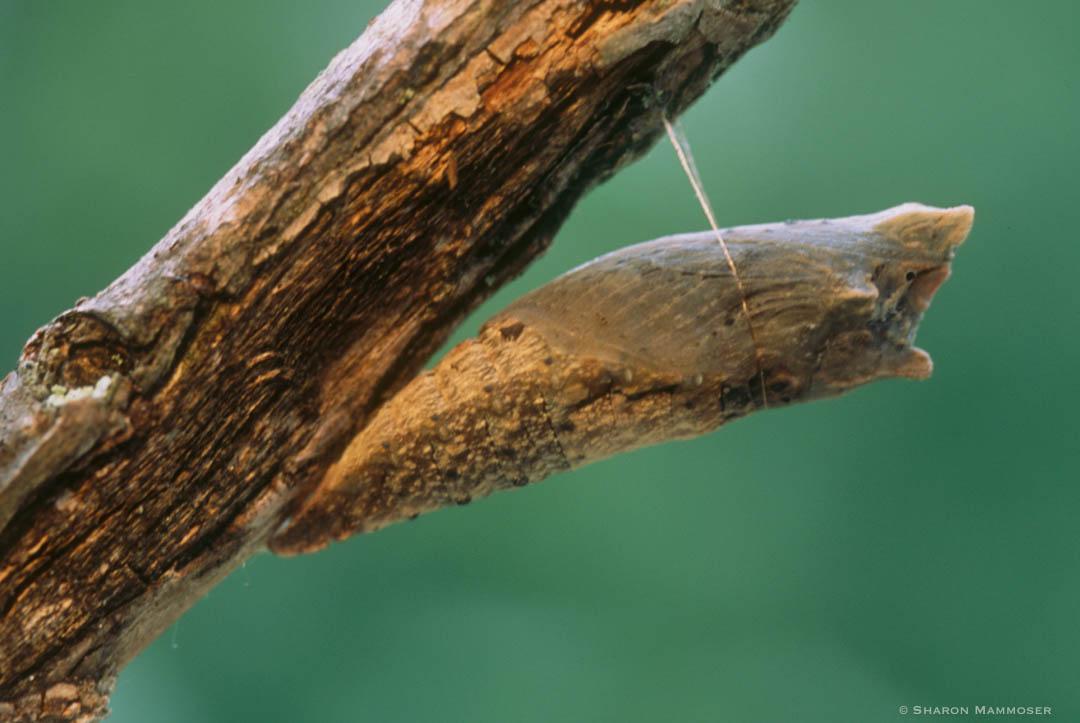
When it’s time, the butterfly will emerge from its chrysalis and will live as an adult for 6-14 days. Adult eastern tiger swallowtails exhibit sexual dimorphism, meaning the females look different than the males. Males are always yellow and black, and have a lot less iridescent blue on their hind wings than females. Female eastern tiger swallowtails can be yellow and black, with a lot of iridescent blue, OR a dark form. Their dark form mimics the distasteful pipeline swallowtail and gives them some added protection from predators.
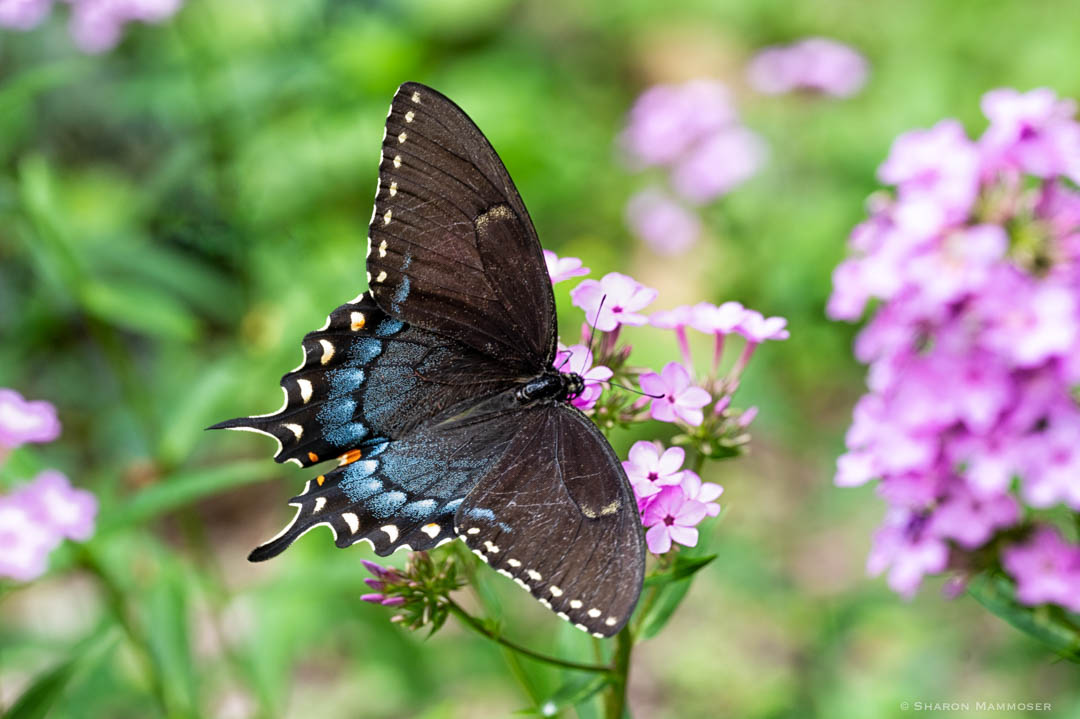
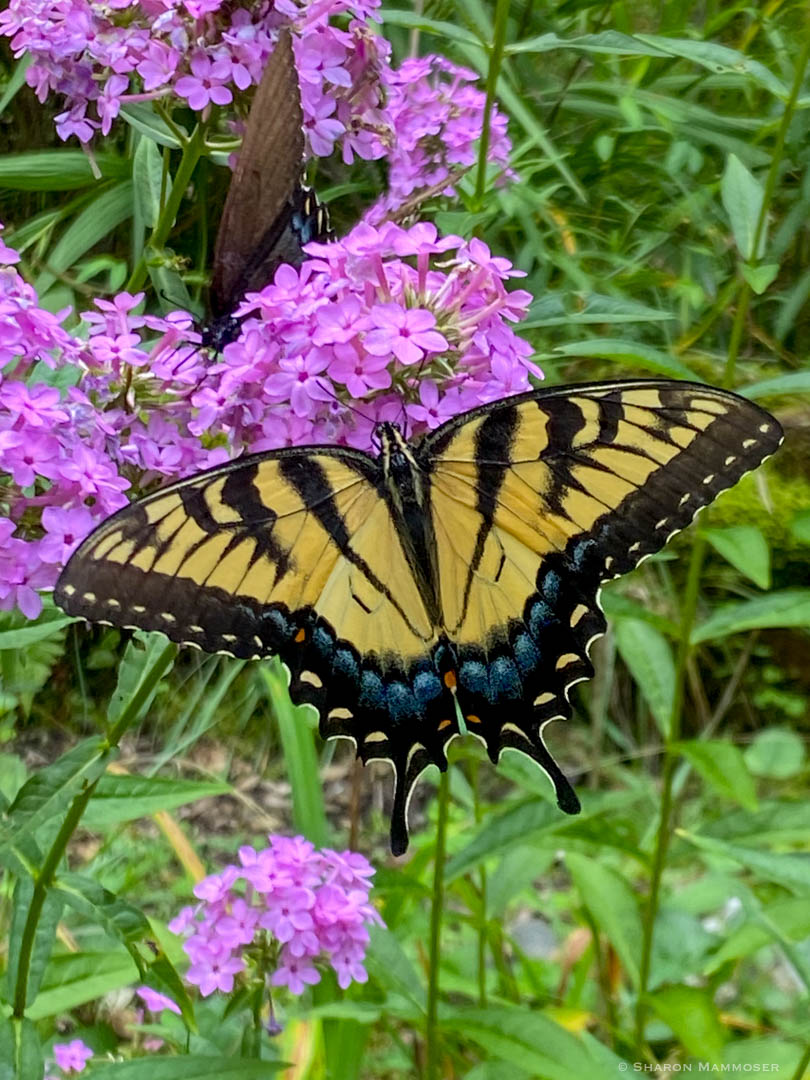
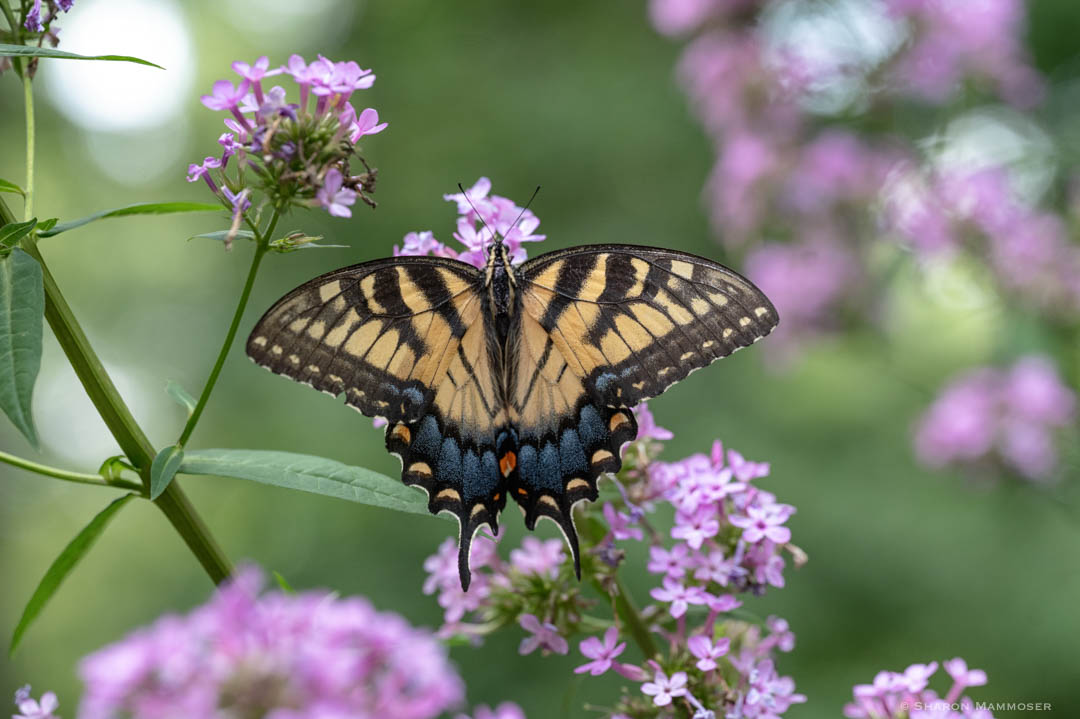
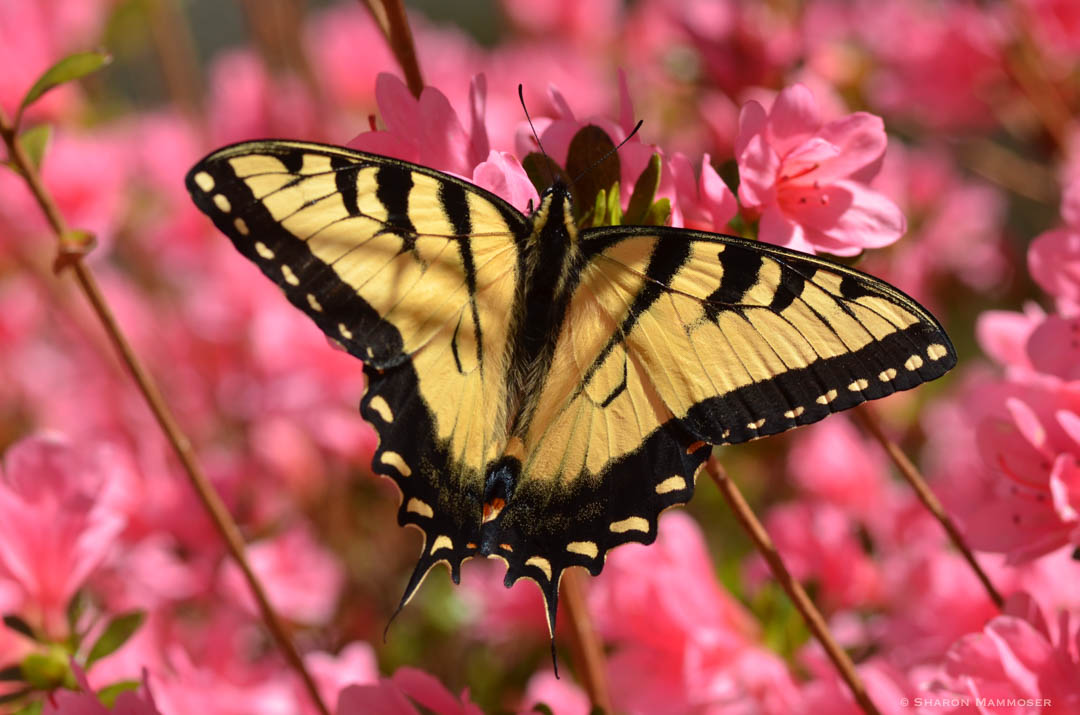
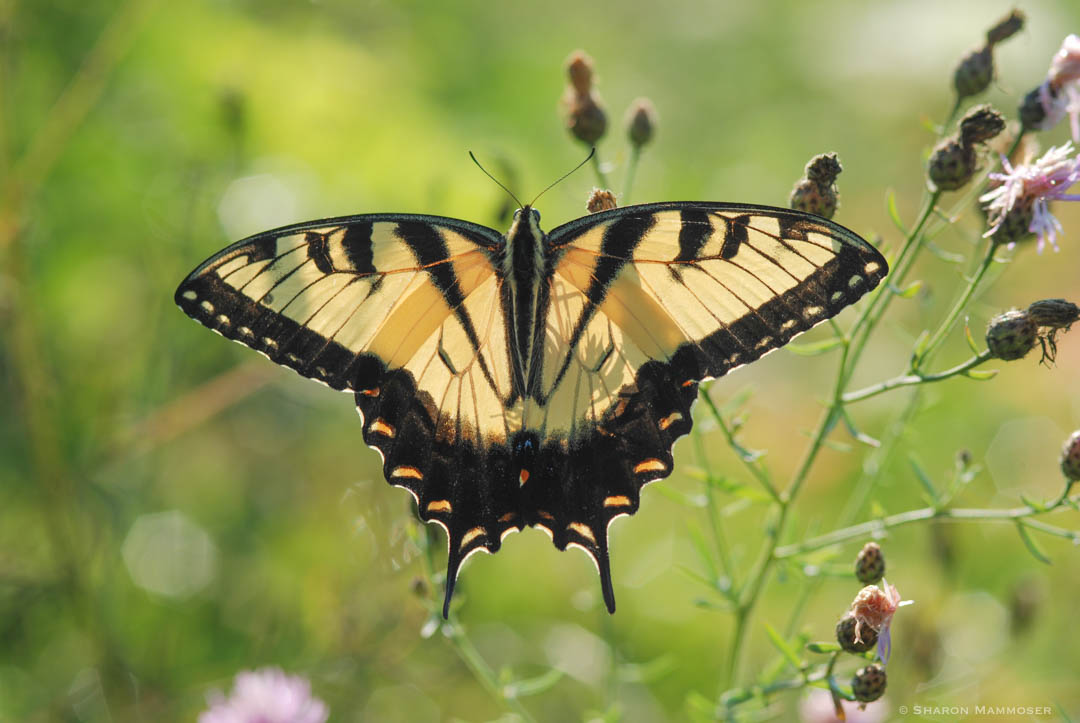
The tails on the hindwings are useful when birds grab them because the butterfly can live without the tails. They may look less perfect, but they can still fly and live another day.
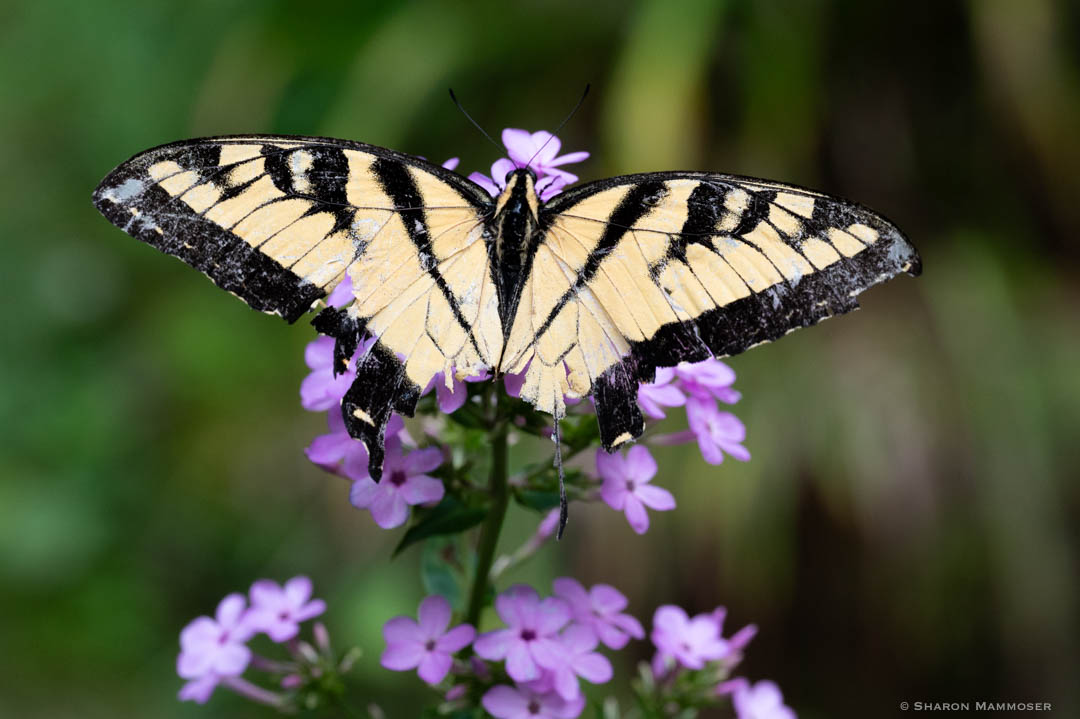
If you want to get learn how to identify the confusing dark butterflies, including the dark form female eastern tiger swallowtail, I wrote a post about it a while back.
Many of the photos you see here were taken of butterflies on one of my very favorite perennials, called Jeana Phlox, Phlox paniculata ‘Jeana’. I highly recommend this amazing butterfly magnet!!
As an FYI, Fall is a great time for planting and there are a few great native plant sales coming up in September. You can check out the list here from my friend Kim who owns Milkweed Meadows Farm in Fruitland, NC. I’ll be at the first two sales in the beginning of the month. Hope to see you there! (Please say hello to me if you come–I’d love to meet you!)
Saturday, September 9, 9 AM – 3 PM
Fall Plant Sale
Botanical Gardens at Asheville, 151 W.T. Weaver Blvd, Asheville, NC
Saturday, September 16, 8 AM – 1 PM
Hendersonville Farmers Market
Historic Train Depot, 650 Maple St., Hendersonville, NC
Saturday, September 23, 11 AM – 3 PM
Mountain Monarch Festival (FREE!)
Gorges State Park, 976 Grassy Ridge Road, Sapphire, NC
Friday, September 29 & Saturday, September 30, 10 AM – 3 PM
Fall Plant Sale & Vendor Market
The North Carolina Arboretum ($20 parking fee for non-members), 100 Frederick Law Olmsted Way, Asheville, NC
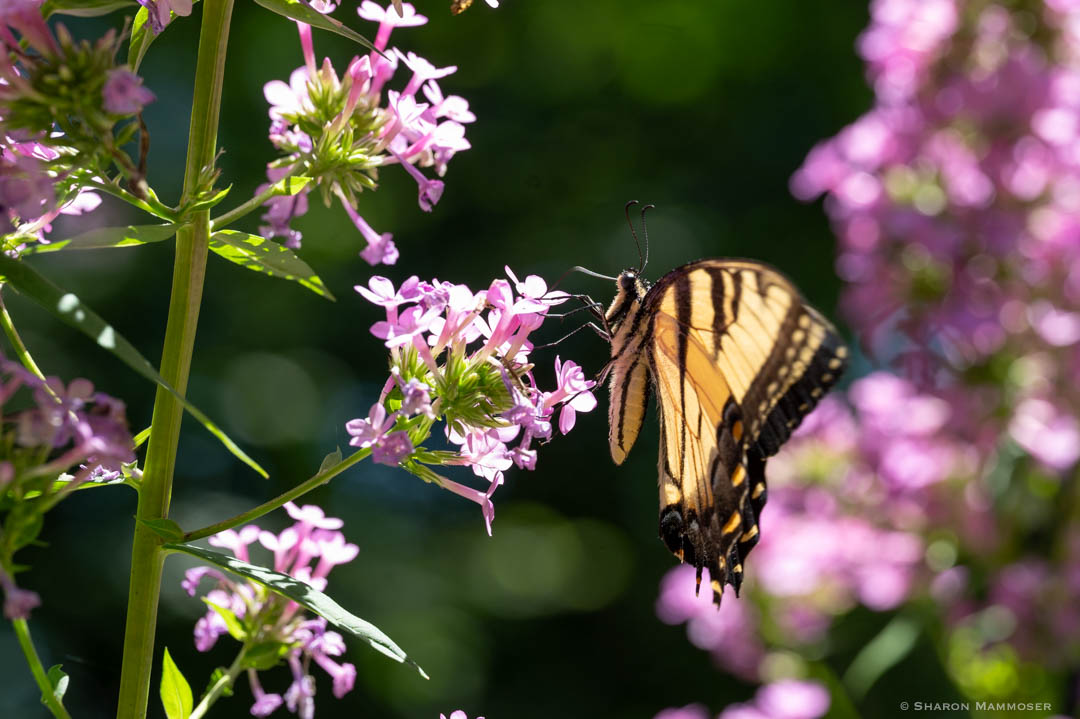
Happy butterfly watching!


